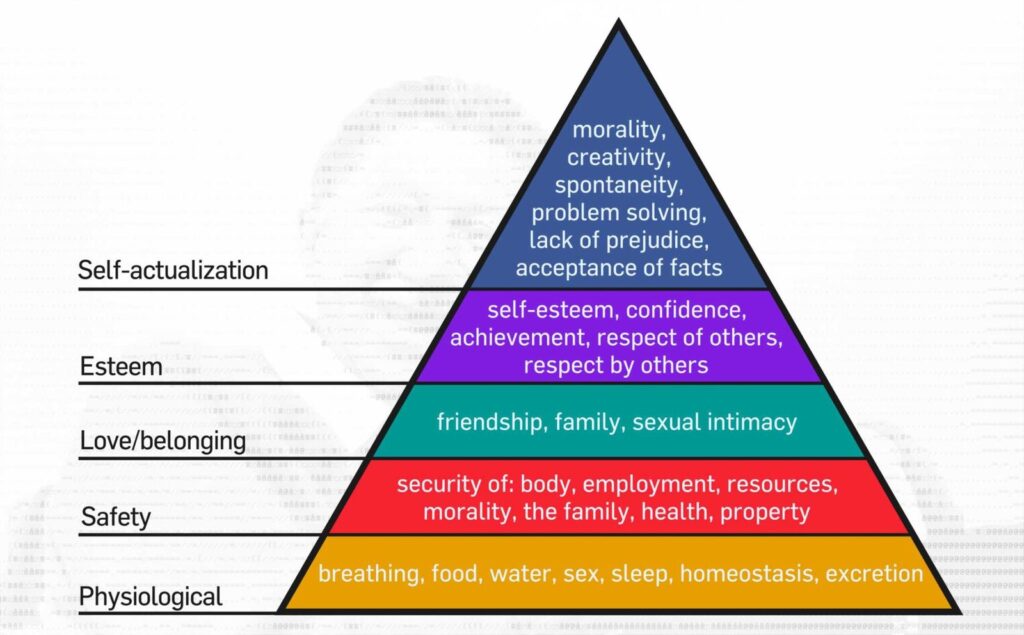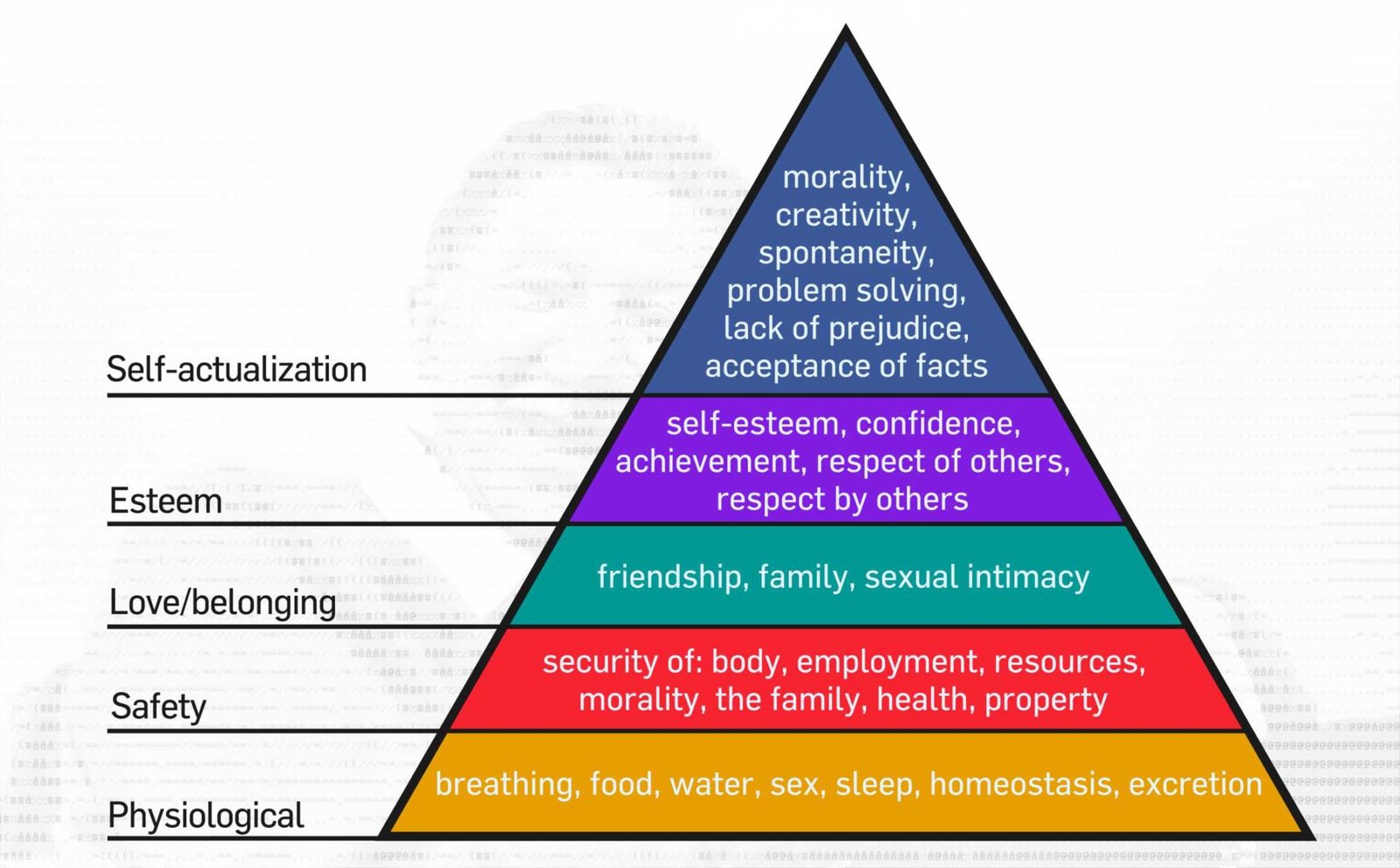
Understanding Maslow’s Hierarchy of Needs Pyramid: A Comprehensive Guide
Abraham Maslow’s hierarchy of needs, often depicted as a pyramid, is a foundational theory in psychology that explains the stages of human motivation. This framework suggests that individuals are motivated to fulfill basic needs before moving on to more advanced ones. Understanding the Maslow hierarchy of needs pyramid is crucial for anyone interested in psychology, business management, or personal development. This article will provide a comprehensive overview of each level of the pyramid, its implications, and its continued relevance in modern society.
The Origins of Maslow’s Hierarchy
Abraham Maslow, an American psychologist, introduced his concept of the hierarchy of needs in his 1943 paper, “A Theory of Human Motivation.” His work was a reaction against the prevailing schools of thought at the time, namely psychoanalysis and behaviorism, which he felt focused too much on pathology and ignored the positive aspects of human nature. Maslow sought to understand what motivates people and what constitutes a fulfilling life. The Maslow hierarchy of needs pyramid emerged as a visual representation of his theory, illustrating the progression from basic survival needs to self-actualization.
The Five Levels of Maslow’s Hierarchy of Needs Pyramid
The Maslow hierarchy of needs pyramid is typically represented with five levels, each representing a different category of human needs. These levels are hierarchical, meaning that individuals must satisfy the lower-level needs before progressing to the higher ones.
Physiological Needs
At the base of the Maslow hierarchy of needs pyramid are the physiological needs. These are the most fundamental requirements for human survival. They include:
- Air
- Water
- Food
- Shelter
- Sleep
- Clothing
- Homeostasis (body temperature regulation)
Without these basic needs met, an individual cannot focus on anything else. In a work environment, this translates to ensuring employees have a comfortable workspace, adequate breaks, and access to basic amenities. [See also: Employee Motivation Strategies]
Safety Needs
Once the physiological needs are satisfied, the next level of the Maslow hierarchy of needs pyramid focuses on safety. This includes:
- Personal security
- Financial security
- Health and well-being
- Safety against accidents and injury
Safety needs encompass both physical and emotional security. In the workplace, this means providing a safe working environment, job security, and benefits like health insurance and retirement plans. Feeling safe and secure allows individuals to focus on their work and personal growth without constant worry. A stable society also contributes to the fulfillment of these needs on a broader scale.
Love and Belonging Needs
The third level of the Maslow hierarchy of needs pyramid addresses the need for love and belonging. Humans are social creatures, and we crave connection and acceptance. This level includes:
- Friendship
- Intimacy
- Family
- A sense of connection
Feeling loved and accepted is crucial for mental and emotional well-being. In the workplace, fostering a sense of community and teamwork can help employees feel valued and connected. This can be achieved through team-building activities, social events, and creating a supportive work environment. Strong interpersonal relationships are key to satisfying this level of the Maslow hierarchy of needs pyramid.
Esteem Needs
The fourth level of the Maslow hierarchy of needs pyramid is esteem. This level includes two components:
- Self-esteem: confidence, achievement, independence
- Respect from others: recognition, status, prestige
Esteem needs involve feeling good about oneself and being respected by others. Achieving goals, receiving recognition for accomplishments, and having a sense of competence all contribute to fulfilling this level. In the workplace, providing opportunities for professional development, offering constructive feedback, and recognizing employee achievements can boost their self-esteem and motivation. A person’s self-worth is directly tied to this stage of the Maslow hierarchy of needs pyramid.
Self-Actualization Needs
At the top of the Maslow hierarchy of needs pyramid is self-actualization. This is the highest level of psychological development, where individuals strive to realize their full potential. Self-actualization involves:
- Becoming the most one can be
- Pursuing personal growth
- Seeking fulfillment
- Creativity and problem-solving
- Acceptance of facts
Self-actualized individuals are self-aware, accepting, and focused on personal growth. They are motivated by intrinsic rewards and seek to make a meaningful contribution to the world. In the workplace, this can be fostered by providing opportunities for creativity, autonomy, and challenging projects that align with their values. Achieving self-actualization is a continuous journey of self-discovery and personal development. The Maslow hierarchy of needs pyramid suggests this is the ultimate goal.
Criticisms of Maslow’s Hierarchy
While the Maslow hierarchy of needs pyramid is a widely recognized and influential theory, it has faced several criticisms:
- Lack of Empirical Evidence: Some critics argue that the hierarchy is not supported by empirical research and is based primarily on Maslow’s observations and philosophical assumptions.
- Cultural Bias: The hierarchy has been criticized for being culturally biased, reflecting Western values of individualism and self-reliance. In some cultures, collective needs may be prioritized over individual needs.
- Rigidity: The hierarchy assumes a rigid progression through the levels, but in reality, individuals may simultaneously pursue multiple needs or regress to lower levels due to unforeseen circumstances.
- Difficulty in Measurement: Measuring the fulfillment of needs, especially at the higher levels, is subjective and difficult to quantify.
Despite these criticisms, the Maslow hierarchy of needs pyramid remains a valuable framework for understanding human motivation and behavior. It provides a useful lens for analyzing individual needs and designing strategies to address them.
Applications of Maslow’s Hierarchy
The Maslow hierarchy of needs pyramid has numerous applications across various fields:
- Business and Management: Understanding employee needs can help managers create a more motivating and productive work environment. By addressing the physiological, safety, social, esteem, and self-actualization needs of employees, organizations can improve job satisfaction, reduce turnover, and enhance overall performance.
- Education: Educators can use the hierarchy to understand the needs of their students and create a learning environment that supports their physical, emotional, and intellectual development. Addressing basic needs like hunger and safety can improve students’ ability to focus and learn.
- Healthcare: Healthcare professionals can use the hierarchy to understand the needs of their patients and provide more holistic care. Addressing patients’ physical, emotional, and social needs can improve their overall well-being and treatment outcomes.
- Marketing: Marketers can use the hierarchy to understand consumer motivations and tailor their marketing messages to appeal to specific needs. For example, advertising for luxury goods may appeal to esteem needs, while advertising for insurance may appeal to safety needs.
- Personal Development: Individuals can use the hierarchy to understand their own needs and set goals for personal growth and fulfillment. By identifying unmet needs, individuals can take steps to address them and move towards self-actualization.
Modern Interpretations and Extensions
In recent years, there have been several modern interpretations and extensions of the Maslow hierarchy of needs pyramid. Some researchers have proposed additional levels to the hierarchy, such as cognitive needs (knowledge and understanding) and aesthetic needs (beauty and order). Others have suggested that the hierarchy should be viewed as a more fluid and dynamic model, with individuals moving back and forth between levels as their needs change. One notable extension is the concept of self-transcendence, which involves helping others achieve self-actualization. This expands the peak of the Maslow hierarchy of needs pyramid to include a more outward focus.
Conclusion
The Maslow hierarchy of needs pyramid provides a valuable framework for understanding human motivation and behavior. While it has faced criticisms, its core principles remain relevant and applicable across various fields. By understanding the five levels of the hierarchy – physiological, safety, love and belonging, esteem, and self-actualization – individuals and organizations can create environments that support human growth and fulfillment. Whether in the workplace, the classroom, or personal life, the Maslow hierarchy of needs pyramid offers insights into what motivates us and how we can strive towards a more fulfilling existence. It serves as a reminder that addressing basic needs is essential for unlocking our full potential and achieving self-actualization.

